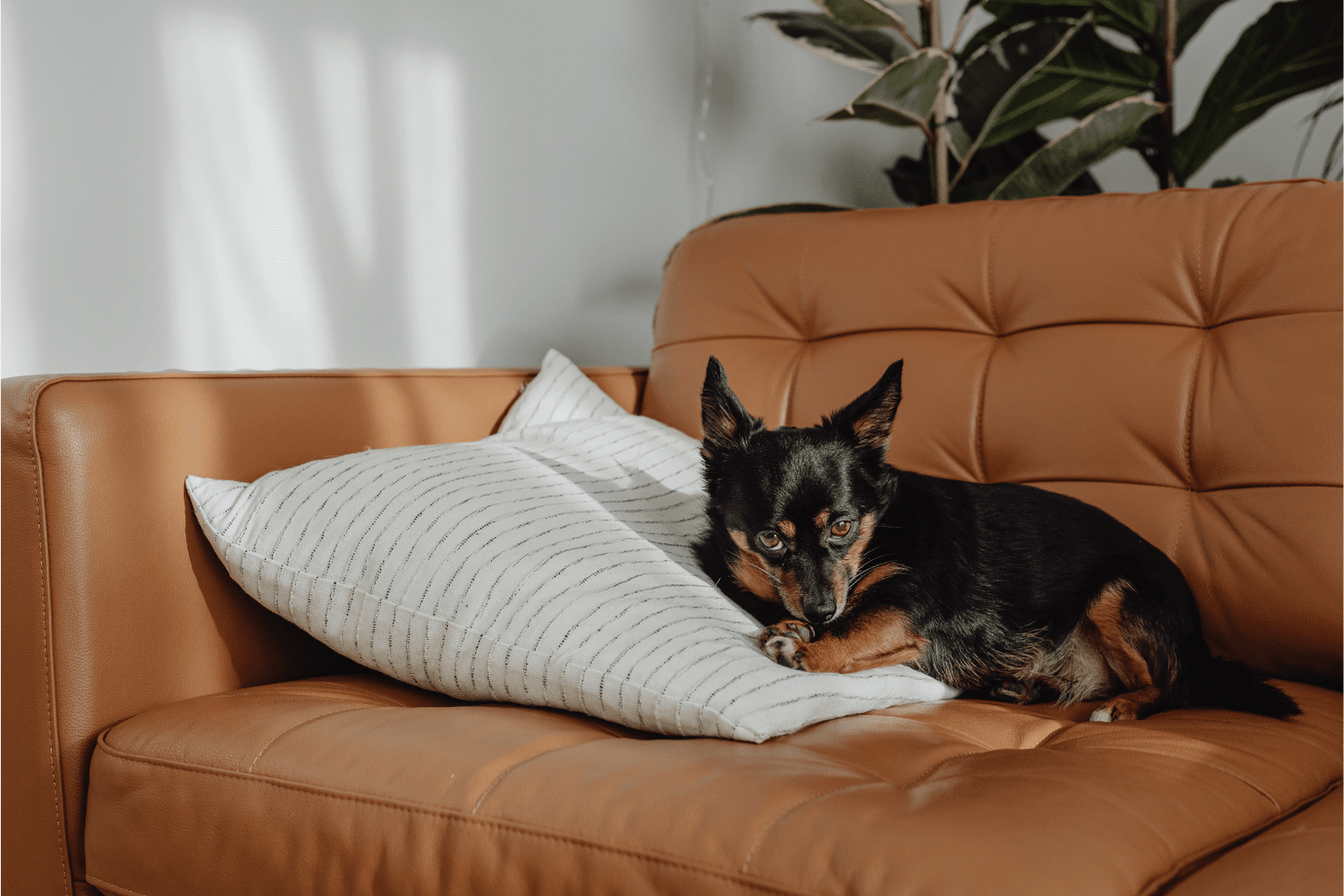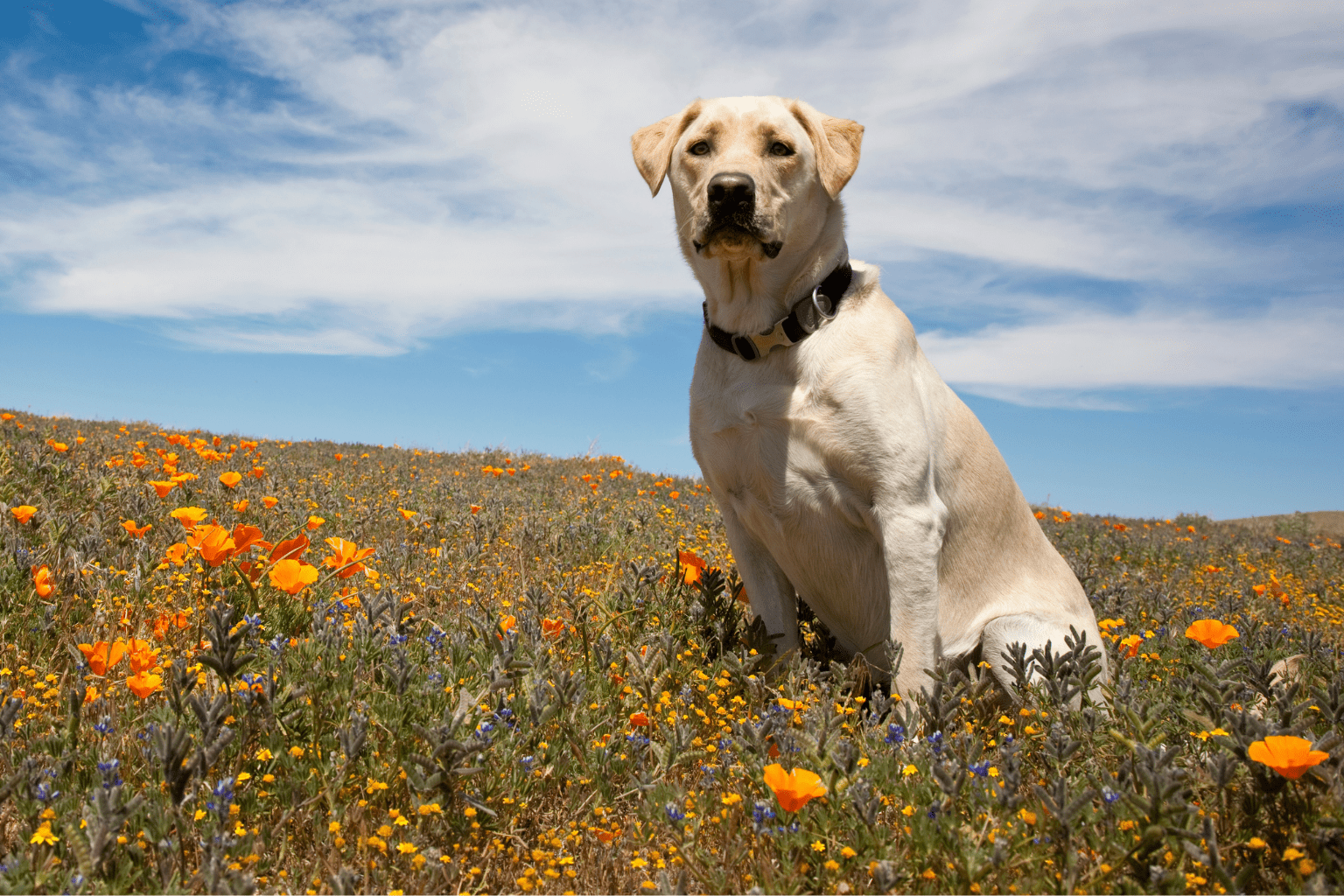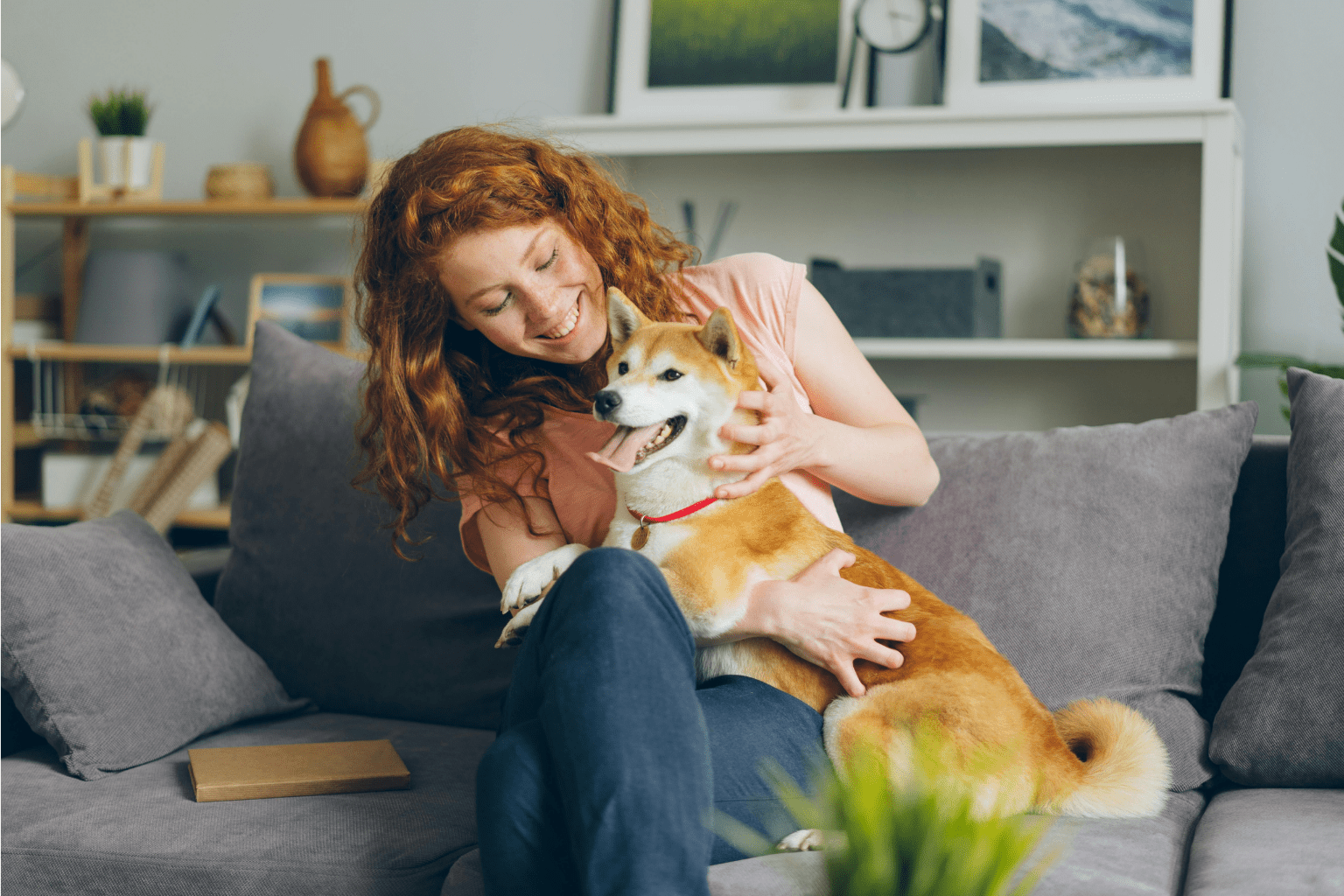Key Takeaways
- A peaceful dog positively impacts the entire household by reducing stress and anxiety.
- Calm behavior in dogs eliminates issues like frantic barking and anxious pacing.
- Understanding a dog's unique needs is essential to nurturing their natural calmness.
- Supporting a dog's ability to find balance leads to a content and happy companion.
Table of Contents
- What Makes a Peaceful Dog? The Science, and Joy, of Calm Companions
- Is Your Dog Peaceful? How to Spot, and Encourage, Calm Behavior
- Choosing the Right Peaceful Dog for Your Life: Breeds, Backgrounds, and Beyond
- How to Foster a Peaceful Environment: Home & Lifestyle Tips for Everyday Calm
- Positive Reinforcement: Training for a Peaceful Mind and Manners
- Natural Support: How BestLife4Pets Homeopathic Remedies May Help Your Dog Stay Peaceful
- Troubleshooting & Solutions: Your Peaceful Dog Questions, Answered
Peaceful Dog: How to Nurture a Calm, Happy Canine (Naturally!)
A peaceful dog transforms your entire household, no more frantic barking at every doorbell, no more anxious pacing during storms, just a content companion who settles into quiet moments as naturally as they chase their favorite ball. After watching countless families struggle with overstimulated, stressed pets, I've learned that true calm comes from understanding your dog's unique needs and supporting their natural ability to find balance.
The path to a peaceful dog isn't about suppressing their personality or energy, it's about creating an environment where they can thrive without constant anxiety or reactivity. Whether you're welcoming a new rescue or helping your current companion find more zen, the right combination of environment, training, and gentle support can make all the difference. Pet Relax Dog Calming Anxiety Relief can be especially helpful for dogs prone to anxiety or stress.
For dogs who struggle with separation anxiety or noise phobia, Peaceful Paws Aggression & Noise Phobia Remedy may provide additional relief and help your dog achieve a more peaceful state of mind.
What Makes a Peaceful Dog? The Science, and Joy, of Calm Companions
Defining a Peaceful Dog: Traits and Temperament
A truly peaceful dog displays adaptable responses to daily life, they might alert you to visitors but settle quickly, they enjoy playtime but also relish quiet cuddles, and they navigate new situations with curiosity rather than fear. These dogs typically show relaxed body language most of the time: soft eyes, loose posture, and the ability to rest deeply without constant vigilance.
The key difference lies between contentment and withdrawal. Peaceful dogs remain engaged and happy; they're not hiding from life but flowing with it. They respond to their family's energy while maintaining their own emotional balance, making them ideal companions for households seeking harmony.
The Roots of Calmness: Nature vs. Nurture
While genetics influence temperament, certain breeds naturally lean toward calmer dispositions, early experiences shape how those tendencies develop. Puppies who receive gentle handling, positive socialization, and consistent routines during their first few months often grow into more adaptable adults, regardless of their breed background. Recent research explores how both genetics and environment shape your dog's personality and calmness.
Even adult dogs can learn peaceful behaviors when given the right support. The brain's ability to form new patterns means that with patience and proper guidance, anxious or overexcited dogs can develop calmer responses to their triggers.
Is Your Dog Peaceful? How to Spot, and Encourage, Calm Behavior

Signs of Calmness in Puppies vs. Adult Dogs
Peaceful Dog Indicators by Age
Puppies (8 weeks - 6 months): Settles after play sessions, accepts gentle handling, recovers quickly from startling sounds, sleeps deeply
Adult Dogs: Relaxed facial expressions, loose tail wags, chooses to rest near family, minimal reactive barking, adapts to routine changes
Remember that puppies naturally have higher energy and shorter attention spans, what matters is their ability to wind down and their overall response to new experiences. Adult dogs should demonstrate consistent emotional regulation throughout their day.
Common Roadblocks to Calm
The most frequent barriers to peace include insufficient mental stimulation, inconsistent daily routines, and overstimulating environments. Dogs who lack appropriate outlets for their energy often develop anxiety or hypervigilance as coping mechanisms. If you're looking for practical strategies, learn how to calm down a stressed dog with actionable tips for everyday situations.
Past trauma, medical discomfort, or sudden lifestyle changes can also disrupt a previously calm dog's equilibrium. These situations require patience and sometimes professional guidance to address the underlying causes.
3 Quick Ways to Encourage Calm, Today
Establish "Settle Time": After walks or play, guide your dog to a comfortable spot and reward them for lying down quietly. Start with just two minutes and gradually extend the duration as they learn to enjoy these peaceful moments.
Reward Existing Calm: Notice when your dog chooses to rest or observe quietly, then offer gentle praise or a small treat. Many pet parents accidentally only reward active behaviors, missing opportunities to reinforce the peace they actually want.
Create Predictable Routines: Dogs find comfort in knowing what comes next. Regular meal times, consistent walk schedules, and designated quiet hours help anxious dogs relax into their daily rhythm.
Choosing the Right Peaceful Dog for Your Life: Breeds, Backgrounds, and Beyond
Best Peaceful Breeds for Different Households
| Household Type | Ideal Breeds | Key Traits |
|---|---|---|
| Families with Children | Golden Retrievers, Cavalier King Charles Spaniels | Patient, gentle, moderate energy |
| Apartment Living | French Bulldogs, Shih Tzus, Pugs | Lower exercise needs, quiet indoors |
| Senior Companions | Basset Hounds, English Bulldogs | Calm demeanor, loyal, less demanding |
| First-Time Owners | Labrador Retrievers, Bichon Frises | Eager to please, forgiving, adaptable |
How to Foster a Peaceful Environment: Home & Lifestyle Tips for Everyday Calm
Creating a Serene Space
Your dog's physical environment directly influences their emotional state. Designate a quiet retreat zone away from high-traffic areas, this could be a corner of your bedroom, a cozy crate with the door always open, or a soft bed tucked beside your favorite reading chair. The key is consistency; this spot should always remain available and undisturbed.
Consider ambient factors that promote relaxation: soft lighting instead of harsh overhead bulbs, minimal noise from televisions or busy hallways, and comfortable temperature control. Some families find that playing classical music or nature sounds during the day helps their dogs maintain steady, calm energy levels.
Our Top 3 Calming Routines
Morning Decompression Walks: Replace rushed potty breaks with slow, exploratory walks where your dog can sniff, investigate, and mentally process their environment. This natural behavior releases stress and provides mental stimulation that promotes later relaxation.
"Place" Command Training: Teach your dog to settle on a designated mat or bed for gradually increasing periods. Start with 30 seconds of calm lying down, reward with gentle praise, then slowly build to 10-15 minutes. This creates a reliable way to encourage peace during busy household moments.
Enrichment Over Excitement: Choose puzzle feeders, sniff mats, and gentle chew toys over high-intensity fetch sessions before bedtime. Mental engagement through problem-solving naturally tires dogs while maintaining their calm demeanor. For more ideas, discover how to exercise dogs indoors in ways that support calmness.
Reducing Everyday Stressors
Common household triggers often create unnecessary anxiety in otherwise peaceful dogs. During thunderstorms or fireworks, close curtains to muffle sounds and flashing lights, stay nearby with calm energy, and avoid overly comforting behavior that might reinforce fearful responses. Instead, model relaxed behavior and engage in quiet, normal activities.
For separation anxiety, practice brief departures without dramatic goodbyes or hellos. Leave a piece of recently worn clothing near their bed and maintain consistent departure routines that signal you'll return. Most dogs adapt to predictable patterns within a few weeks when approached with patience rather than guilt.
Positive Reinforcement: Training for a Peaceful Mind and Manners

How Positive Training Supports Calmness
Positive reinforcement creates peaceful dogs by building confidence rather than fear. When you reward desired behaviors, like lying quietly during dinner or settling calmly when visitors arrive, your dog learns that relaxed responses earn good things. This approach strengthens the neural pathways associated with calm decision-making.
Traditional punishment-based methods often increase anxiety and reactivity, creating dogs who appear "obedient" but remain internally stressed. Research consistently shows that dogs trained with positive methods display lower cortisol levels and more stable temperaments throughout their lives. If your dog struggles with aggression or noise phobia, Peaceful Paws Aggression & Noise Phobia Remedy may help support a more balanced temperament.
Everyday Exercises for Calm
"Settle" on Command: Place a comfortable mat in your living area and guide your dog to lie down on it. The moment they relax completely, head down, breathing steady, mark with "good settle" and offer a small treat. Practice twice daily for 5 minutes, gradually extending the duration until your dog can maintain calm for 15-20 minutes.
"Focus" for Busy Moments: Teach your dog to make eye contact when distractions arise. Start in quiet environments, say "watch me," and reward immediate attention. Once reliable indoors, practice during walks when other dogs or interesting smells appear. This redirects excited energy into calm connection with you.
Scatter Feeding for Mental Calm: Instead of bowl feeding, sprinkle kibble across your yard or hide it in sniff mats. This natural foraging behavior engages your dog's mind while encouraging slow, methodical eating that promotes relaxation rather than food-driven excitement.
Handling Hiccups: When Training "Isn't Working"
Most training plateaus stem from timing or motivation issues rather than stubborn dogs. If your peaceful dog training stalls, check whether you're rewarding within 2-3 seconds of the desired behavior, delayed rewards confuse dogs about what earned the treat. Also ensure your rewards match your dog's preferences; some dogs prefer gentle praise over food, while others need higher-value treats during challenging lessons.
Sessions longer than 5-10 minutes often create mental fatigue that resembles defiance. Break training into multiple short practices throughout the day, and always end on a successful note. Remember, building genuine calmness takes weeks of consistency, not days of intensive practice. For more on the science behind canine learning and behavior, explore this Nature article on dog cognition and training.
Natural Support: How BestLife4Pets Homeopathic Remedies May Help Your Dog Stay Peaceful
Why Homeopathy? Gentle Support for Everyday Stress
Homeopathic remedies work by supporting your dog's natural ability to maintain emotional balance without the side effects common in conventional medications. Our carefully formulated pellets contain no harsh chemicals or sedatives, instead, they gently encourage your dog's own systems to find equilibrium during stressful situations.
Unlike liquid formulations that can be messy or rejected by picky dogs, our tiny pellets dissolve quickly when placed in your dog's cheek. This makes administration simple and stress-free, which is essential when you're trying to promote calmness rather than create additional anxiety around "medicine time."
When to Use Calming Remedies
Situational stress often disrupts even naturally peaceful dogs. Administer our calming support 15-20 minutes before anticipated triggers like thunderstorms, fireworks, or car rides. For ongoing transitions, new homes, schedule changes, or family additions, daily support for 1-2 weeks helps maintain emotional stability during adjustment periods.
The gentle nature of homeopathic remedies means you can safely repeat doses during extended stressful events. Many families find success giving an initial dose before fireworks begin, then repeating every 30-45 minutes as needed throughout the evening.
How Our Calming Remedies May Help
Our homeopathic formulations may ease common signs of stress including restlessness, excessive panting, hiding, or pacing during storms. Many pet parents report their dogs settle more quickly into new routines and show increased resilience when facing unexpected changes in their environment. If your dog also experiences allergy-related stress or discomfort, Dog Allergy Relief & Immune Support can help support their overall well-being.
The remedies help maintain your dog's natural peaceful temperament rather than masking anxiety with sedation. Dogs remain alert and responsive while feeling more emotionally balanced, perfect for families who want their companion calm but not drowsy during important events or social gatherings.
Bailey's Peaceful Transformation
Bailey, a 9-year-old Spaniel mix, had always hidden in the basement during thunderstorms, panting and trembling for hours. After starting our calming support, her family noticed she began staying upstairs during the first storm, lying quietly near her favorite humans instead of isolating herself. Within three weeks, Bailey was sleeping peacefully through most weather events, giving everyone in the house more restful nights.
Not a substitute for professional veterinary advice.
Troubleshooting & Solutions: Your Peaceful Dog Questions, Answered
Top Troubles, Real Solutions
My dog barks at every noise, how do I help? Start by identifying trigger sounds and practice the "focus" command during quiet moments. When barking begins, redirect attention to you with treats for eye contact, then reward silence. Gradually expose your dog to recorded trigger sounds at low volumes while rewarding calm responses.
What if my calm dog suddenly becomes anxious? Sudden behavioral changes often signal health issues or environmental stressors. Schedule a veterinary checkup to rule out pain or illness, then evaluate recent changes in routine, household dynamics, or surroundings. Sometimes simple adjustments like moving their bed away from a noisy appliance can restore peace.
How long does it take to see results with natural calming support? Most dogs show initial improvement within 30-60 minutes of their first dose during acute stress situations. For long-term behavioral changes and overall emotional balance, consistent use over 2-3 weeks typically yields the most significant results.
Frequently Asked Questions
What are the key traits and behaviors that define a peaceful dog?
A peaceful dog shows relaxed body language like soft eyes and loose posture, responds calmly to everyday events, and balances alertness with contentment. They enjoy play and quiet moments alike, staying engaged without anxiety or fear.
How can I encourage and nurture calm behavior in my dog, whether a puppy or an adult?
Consistent routines, gentle exercise, mental stimulation, and positive reinforcement help nurture calm behavior. Creating a supportive environment where your dog feels safe encourages natural relaxation without suppressing their personality.
What role do genetics and early experiences play in shaping a dog's calm temperament?
Genetics provide a foundation for temperament, but early socialization and positive experiences shape how a dog handles stress and novelty. Together, they influence a dog's ability to stay balanced and respond peacefully to their world.
How can homeopathic remedies like BestLife4Pets support my dog's peaceful state of mind?
BestLife4Pets homeopathic remedies gently support your dog's natural ability to manage stress and anxiety, helping maintain calmness during challenging moments. They work alongside training and environment to promote a peaceful, happy companion. Not a substitute for professional veterinary advice.



